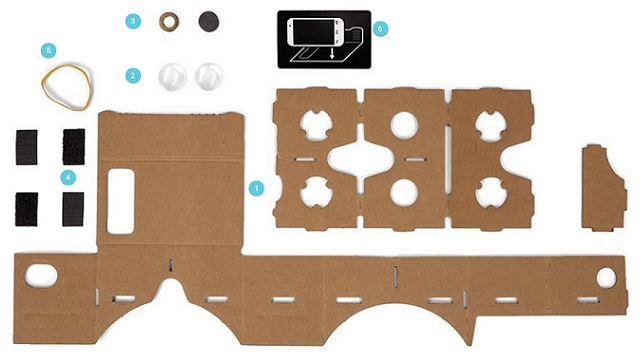Virtual reality is on the rise at the moment. This exciting new technology is something that nearly everyone has at least some interest in, and who can blame them? Getting fully immersed in a game via VR has been a fantasy for almost as long as gaming has existed. And now, it’s closer than ever to being a reality.
However, we should be extremely wary about accepting the current state of VR as “finished” or “mainstream”. While incredible, the technology has a long journey ahead before that’s a reality for a number of reasons.
The Price
The first and most obvious issue with VR is the price. Most consoles these days go for around $300 (or $500 if you’re called the Xbox One X). The two biggest VR headsets, the Oculus Rift and the HTC Vive, are priced at a whopping $600 and $800 respectively (note: the Oculus price is including the touch controllers).

Pretty much the only affordable way to experience VR.
The price on its own is intimidating enough, but then you need to consider the specs. You need a powerful computer to run VR. On a decent PC, you can get away with most visually demanding games– a little frame lag is possible to work through. This, however, is unacceptable in VR. The framerate needs to be as crisp as possible to avoid motion sickness— and to just maintain the illusion that you’re in a virtual world. So if your computer is just “okay”, you’re not only looking at the price of the headset itself (plus accessories), you’re potentially looking at getting a new graphics card or even a new computer altogether if you own a laptop. This lack of affordability amounts to a fairly damning lack of demand when it comes to VR.
The Technology
The price is one thing, but another is the technology itself. Because it is so new, there is very little standardization on how to work with it. I have actually worked on a few VR games myself, and each of them went through massive technical difficulties simply because there’s currently no widely used software that’s built specifically to develop in VR.

Pictured: The VR developer experience.
A similar issue with the technology is that the only popular item is the headsets. There are companies working on products like 360 degree treadmills and even haptic suits, but those are being developed separately from the headsets. Another vitally important thing that’s still being worked on is eye tracking. At the moment, the Rift and the Vive cannot track your eye movements, but once that changes, the ramifications are huge. Once the headsets are able to tell where you’re looking in a game, they will only have to render what is in your immediate field of view. This means that the graphical requirements we talked about above will go down drastically, resulting in a lower price investment.
The Games
Technology is one thing, but what good is a piece of gaming hardware without games? Well, this isn’t an issue, as there are plenty of games available for the Rift and Vive. Or are there?
Well, there are, but that comes with a major caveat; there are a precious few– if any– full-length games designed specifically with VR in mind.
VR games these days tend to fall into a couple categories. The most common are what basically amount to tech demos, or environments to explore. This includes games like I Expect You To Die, Rick and Morty VR, and the like. It should be noted that I Expect You To Die is an excellent game, and one that will help illustrate a point later on. There is, however, one trait these games all share: they are short. Nearly all games that have been developed for VR feel more like a proof-of-concept than a fully realized, fleshed out game. Even incredibly fun games like Budget Cuts and SUPERHOT VR fall into this category.
There are longer games you can play in VR, however. Some AAA releases like Resident Evil 7, and more recently DOOM and Skyrim have options to play in VR. However, the fact that these games weren’t originally designed for it is a bigger problem than you think. Designing for VR is drastically different than doing so for more standard platforms. A great example is I Expect You To Die. Every facet of the game is designed with VR in mind, from the stationary position it puts you in to the sheer amount of item interactions that have been coded in. The CEO of Schell Games (the developers of IEYTD), Jessie Schell, wrote an extensive blog post where he discussed these differences at length (you should take note of lessons two and three in particular). The games I listed above, while they can be played in VR, do not follow these guidelines. Eventually we might have full-length games designed directly for the medium, but there needs to be a demand first, and that means the price will have to go down.

Because it definitely needed a VR version.
VR is a medium with a lot of potential, but it has a long way to go before that potential is fully realized. Between the price, lack of standardization, and lack of full-length games, it’s currently more of a fun gimmick than a mainstream product. Granted, this will change with time, but the only question is… how much?
What are your thoughts on VR capabilities? Do you think it has a future? Share your thoughts in the comments below!







Published: Jun 28, 2017 04:39 pm